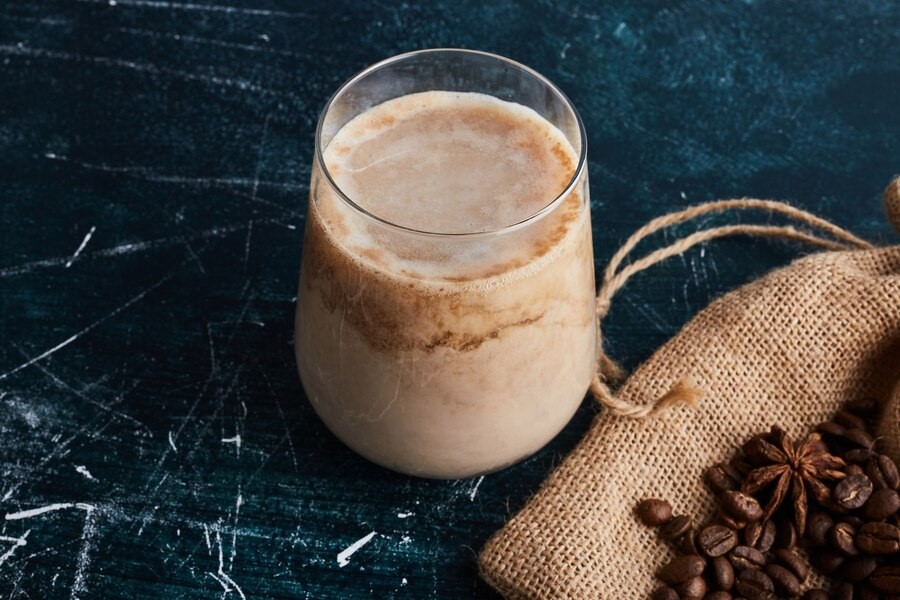What is the difference between Espresso, Ristretto and Lungo? New coffee lovers must feel confused when distinguishing between them. Indeed, these base types look the same, unlike Americano, mocha, latte and cappuccino.
Espresso, Ristretto, and Lungo use machines to make them, but the base ingredients and basic process are the same. The difference lies in the length of the extraction process. Let’s learn more about the differences.
What is Espresso?
Espresso is the most common shot option on coffee shop menus. Unlike drip coffee, espresso is usually thicker in consistency. This type is usually used as a base for making other coffee drinks.
The most basic espresso is made when water is passed over finely ground and compacted coffee grounds, at a very high pressure of around 9 bar.
Although the machines are different, the results may look the same. The character of espresso usually has a dose of strong and flavorful coffee. Also, the creaminess is more delicious than other brewing methods, which is the aspect that makes it stand out the most.
In a typical American or Italian espresso recipe, it generally requires 7 grams of finely ground coffee in every 25-30ml of water. However, note that this may vary from cafe to cafe due to different guidelines and recipes.
What is Ristretto?
To the layman, this type of variant does not sound as popular as espresso. However, for its lovers, Ristretto is chosen when they want a light coffee. Why is it considered light? Because the extraction process is more limited.
In terms of language, Ristretto is Italian for limited. The extraction process is around 15 seconds, or half that of espresso. Nonetheless, the flavor is sweeter, richer, yet smooth.
In addition, faster extraction leads to less acidity. However, the caffeine content of ristretto is not too different in terms of the amount per milliliter, although it may be lower due to the short extraction. Appropriate ristretto brewing can result in a sweet-tasting brewed coffee.
The recipe for making a typical American ristretto shot usually uses 7 grams of coffee with 12.5-15 ml of water. The resulting extraction is about 11 ml only. Interestingly, many coffee experts consider the flavor notes to be smoother due to the faster extraction.
What is Lungo?
Another method of preparing coffee using an espresso machine is known as Lungo. Similar to Ristretto, the basic difference is the amount of water used in the recipe. The water content is twice that of a regular espresso recipe per 7 gr of coffee powder. However, the difference lies in the length of the extraction process.
While espresso extraction takes around 30 seconds, ristretto takes 15 seconds, lungo requires 1 minute of extraction. The use of more water, twice as much, makes the coffee aroma much deeper and thicker. That’s why the shot is around 130-170 ml.
Similarly, ristretto, Lungo is less popular than espresso. This could be because it’s less common and few people know about it. It has a more bitter taste, so it goes well with sweet pastries.
So, if you want maximum caffeine intake, but want a more unique flavor, Lungo could be the right choice. It requires 7 grams of coffee powder and 50 ml of water. The end result is a drink of 45 ml extraction.
The Different Flavors of Espresso, Ristretto, and Lungo
As explained earlier, all three are variations on the basic technique of preparing coffee. The main differences are seen in the flavor of the result and the amount of caffeine concentration.
Espresso flavor
The extraction displays a darker, earthy and nutty aroma. In addition, it displays a fairly strong chocolate flavor. The resulting crema is a brownish-white color that forms on the surface of the drink. This is the part that many connoisseurs look for, as well as its signature blend of creamy, smooth chocolate and caramel flavors.
Espresso has a note of floral aroma, but unfortunately only a little because it is masked by the aforementioned characteristics. So, even if there is, the aroma is only subtle.
Ristretto Flavor
The aromatic flavor comes from the long extraction time and high pressure. In fact, this pressure is the same as the other basic methods, the difference being that the extraction period is limited, making it less thorough.
Even so, the extraction results in earthy notes, but the creaminess is thinner with no chocolate aroma emerging. Interestingly, it gives off a unique floral coffee aroma when inhaled. For those who want to get a strong herbal aroma between flowers and fruits, Ristretto is an interesting choice.
Lungo flavor
The longer extraction results in a burnt and smoky aroma. This drink is usually chosen by people who want a high amount of caffeine rather than enjoying the flavor. However, some connoisseurs look for a bitter flavor in this variant, to pair with cakes or sweet treats.
Using Espresso, Ristretto, and Lungo to Make Other Drinks
Most people enjoy espresso alone without mixing it with anything. However, there are many other options to make other delicious drinks. For example, using Lungo to make an Americano is especially for caffeine lovers.
Meanwhile, you can mix Ristretto in mocha-based drinks to add a unique floral aroma. Then, mix it with other syrups such as lavender. Those who cannot consume high levels of caffeine can try this ristretto.
Now, you understand the differences between the three types of drinks above. Recognizing the differences helps you when you want to combine them with other recipes. Come on, it’s time to enjoy your own coffee.
Reference:
- Little Coffee Place. Ristretto, Lungo, Espresso. Accessed on January 20, 2024. https://www.littlecoffeeplace.com/ristretto-lungo-espresso
- Coffee Circle. Difference Espresso, Lungo, and Ristretto. Accessed on January 20, 2024. https://www.coffeecircle.com/en/b/difference-espresso-lungo-ristretto
- Otten Coffee. Espresso, Ristretto, and Lungo: What’s the Difference? Accessed on January 20, 2024. https://ottencoffee.co.id/majalah/espresso-ristretto-lungo-apa-bedanya









